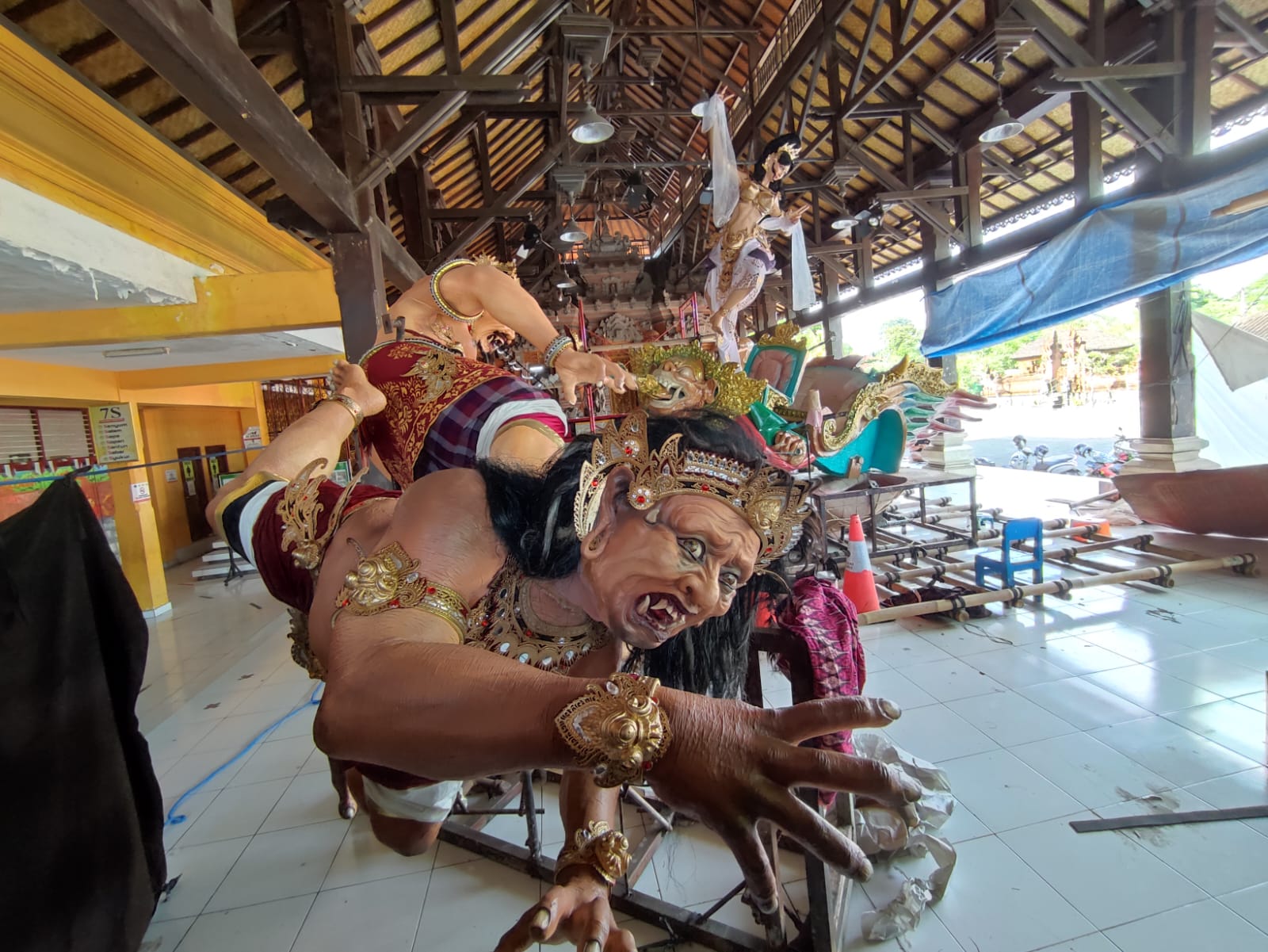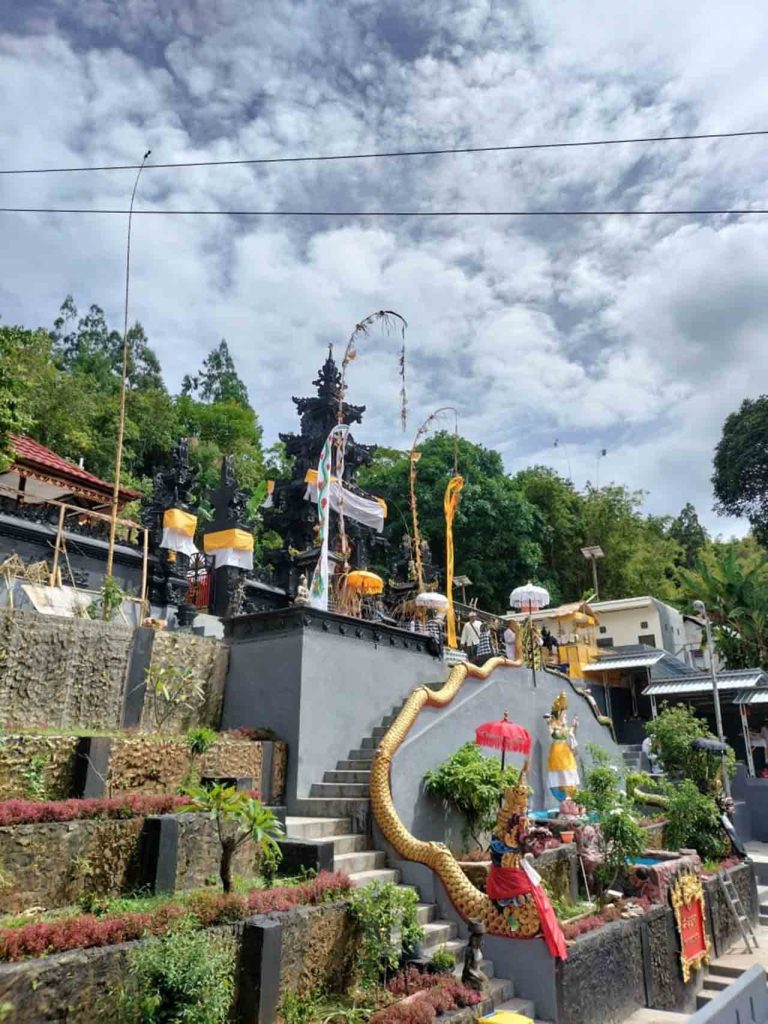In the days leading up to Nyepi, Bali’s Day of Silence, the island comes alive with the electrifying spectacle of the Ogoh-Ogoh parade.
Towering effigies of monstrous creatures, vividly painted and meticulously crafted, dominate the streets as they are carried on bamboo platforms and swayed from side to side.
This tradition, which has become synonymous with Nyepi Eve, is more than just a visual spectacle. It is a cultural and spiritual ritual designed to purify the island and its inhabitants of negative forces and energy before entering a new year in the Balinese Saka calendar.
The origins of Ogoh-Ogoh are deeply rooted in Balinese Hindu cosmology. These colossal figures symbolize Bhuta Kala, metaphysical forces representing chaos, darkness, and malevolent energy.
The term ogoh-ogoh itself is derived from the Balinese word ogah-ogah, which means to shake or sway—an apt description of how these effigies are carried in ritualistic parades.
Though the tradition, in its current form, only gained widespread prominence in the 1980s, the concept of creating effigies to ward off evil spirits is much older.
Some historians trace it back to earlier practices of using scarecrow-like figures called lelakut, believed to possess supernatural powers, to protect crops from pests.
Over time, this evolved into the elaborate Ogoh-Ogoh creations seen today, particularly in areas like Kesiman, a district in Denpasar known for its pioneering role in shaping modern Ogoh-Ogoh parades.
The neighborhood of Kesiman holds a special place in the history of this tradition. As early as the mid-20th century, local youth began crafting simple rattan and bamboo figures, which they paraded through the village on the eve of Nyepi.
By the late 1970s, this practice had grown in complexity and significance, eventually catching the attention of regional leaders.
In 1983, Bali’s then-governor, Ida Bagus Mantra, encouraged the spread of
Ogoh-Ogoh parades as a way to invigorate Nyepi observances while showcasing Balinese creativity and spirituality.
Kesiman’s contribution to the tradition solidified its reputation as a cultural hub, and today, it remains one of the key centers for Ogoh-Ogoh production and parade activities.
Constructing an Ogoh-Ogoh is no small feat. The process can take weeks, even months, and involves multiple stages, from designing the figure to assembling the bamboo frame, layering it with papier-mâché, and painting intricate details.
Each effigy is a collaborative effort, typically involving entire banjars—the traditional neighborhood councils that are the backbone of Balinese communal life.
The themes depicted in Ogoh-Ogoh are as varied as they are vivid. Many are inspired by Hindu mythology, featuring characters like Rahwana, the ten-headed demon king from the Ramayana, or Durga, the fierce goddess of destruction.
Others take a more satirical approach, reflecting contemporary social issues, from environmental degradation to political corruption.
This blend of ancient mythology and modern commentary is part of what makes Ogoh-Ogoh both timeless and relevant.
The climax of the Ogoh-Ogoh tradition occurs on the night of Pengerupukan, the eve of Nyepi. As darkness falls, the effigies are paraded through the streets, accompanied by traditional Balinese gamelan music, chanting, and the rhythmic beating of drums.
The atmosphere is both festive and ominous, as the swaying Ogoh-Ogoh figures seem to come alive in the flickering torchlight.
The parade’s purpose, however, is deeply spiritual. By symbolically “scaring off” negative forces, the ritual aims to cleanse the island of evil influences before the sacred stillness of Nyepi, when all activity ceases for 24 hours.
At the end of the night, many Ogoh-Ogoh are ceremonially burned, signifying the destruction of impurities and a return to cosmic balance.
Beyond its religious significance, the Ogoh-Ogoh tradition has also become an important expression of Balinese identity and artistic prowess.
The competition between banjars to create the most impressive effigy has fueled ever-greater creativity, resulting in increasingly elaborate designs and larger-than-life figures.
This has also led to debates about the commercialization of the tradition, as some critics argue that the focus on spectacle can overshadow the ritual’s spiritual meaning.
Yet for many Balinese, the Ogoh-Ogoh parade remains a vital part of their cultural heritage, a way to honor their ancestors, preserve communal ties, and reflect on the dualities of life—good and evil, order and chaos, creation and destruction.
At its core, the Ogoh-Ogoh tradition is a powerful reminder of the importance of balance in Balinese Hindu philosophy.
Just as the effigies embody both ancient fears and contemporary anxieties, the ritual of parading and destroying them serves as a cathartic release, allowing participants to confront and dispel negativity before entering a new year with a clean slate.
As Bali continues to evolve in the face of globalization, the Ogoh-Ogoh tradition stands as a testament to the island’s ability to adapt while remaining rooted in its spiritual and cultural foundations.
For those fortunate enough to witness it, the parade offers not just a dazzling display of artistry, but a profound glimpse into the Balinese way of life—where even monsters have a role to play in the pursuit of harmony and enlightenment. (BT)





